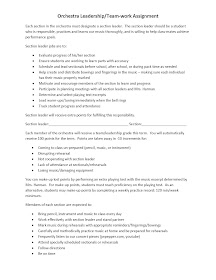Classroom routines are a necessity, but sometimes these same routines can make class time start to feel mundane. Occasionally, students need a change...something that will help them become excited about playing their instrument....something that will inspire them keep working to improve every day.
Here are 10 ways you can get your students FIRED UP!
1. Begin class with a movement exercise using fun, upbeat music. As students enter the classroom, their mood can be changed depending on the music they hear. Crank up some music and have students follow your movements with a simple warm up. Bow games work well (unless that's already part of the usual routine). Any movement matching activity works well - where students move to the beat. Sometimes, we put instruments down, and practice just moving to the beat. Clapping, stomping, standing, sitting, rocking, bopping..etc.
2. Perform for your students. One time on a playing test day, I brought my instrument and performed a 'playing test' for my class. I let students grade me using the same form/rubric that I use to grade their tests.
3. Play tunes by ear. Let students make song requests. My students love to call out tunes to see if I can play them by ear. When they hear me figuring out popular movie tunes, they want to try it, too. Students love to show me pieces they have figured out how to play.
4. Pass out new music. After weeks of rehearsing the same few pieces, students need a change. Find something light and fun for students to play. Often students are inspired to practice once they have some new material!
5. Play a game. Just saying the word 'game' to students perks ears and they want to listen to be able to play the game. There are many simple games that require no preparation which can inspire students to work hard during class. Recently, I created a game called 'Epidemic.' To play the game, send 3-4 students to the hallway - these will be the doctors. While the doctors are in the hall, the class decides on one 'disease' that will plague the students. For example, you can have the plague be pancake wrists, crooked bows, bad bow holds, crossed legs...there are plenty of possibilities! Then choose 5 students to be infected with the disease. The doctors come back in and the class plays part of a piece while the doctors try to diagnose the sickness. They get one guess. If they do not guess correctly, more students are chosen to be infected. The game continues and the doctors must try to figure out the disease before the entire class becomes infected.
6. Record the class performing. Students love to hear themselves and they get very motivated to improve when hearing their own performance. Let students figure out what needs to be fixed in a certain passage by recording and listening to small sections.
7. Let students perform for another class. Invite students into your classroom and perform a quick piece, or invite office staff. You could send a few students to serenade the school secretary (as long as she's not on the phone.)
8. Watch a video of a fabulous performance. Students are inspired by watching great performances. Piano Guys, Lindsey Stirling, 2 Cellos, Simply Three, Time for Three - these are all great options, but there are many videos featuring classical music also. I really like showing part of the Maxim Vengerov master class.
9. Re-arrange the seating. Students get tired of always sitting in the same place. I make new seating charts every 2 weeks so that students get to know each other. Also, they can feel the difference between playing in the back and playing in the front of the group. I don't think any student should be forced to always play in the back. All students benefit when seats are frequently changed.
10. Give them a challenge. Have you noticed that rubix cubes have made a huge come-back? Students love the challenge of figuring out that puzzle - I am amazed at how many students carry those puzzles around and can solve them in minutes. Students also enjoy the challenge of difficult music and technique. I have had students work extra hard to play "Devil's Dream" as fast as I play it. You can challenge students to do things like...shifting, vibrato, fast playing/string crossings, 3 octave scales... anything they haven't yet learned. My students are always anxious to learn things that help them become more advanced players.
Do you have more ideas? Feel free to add comments! :)





